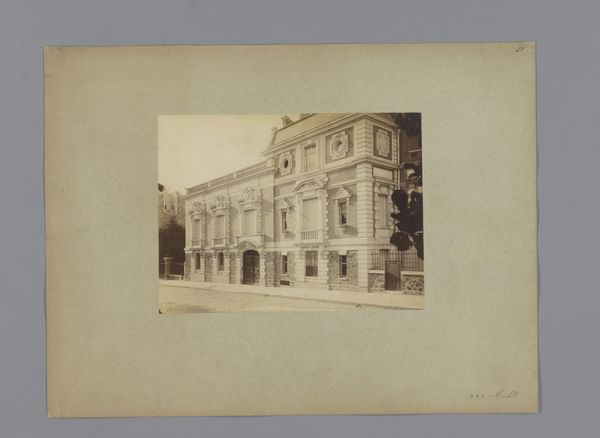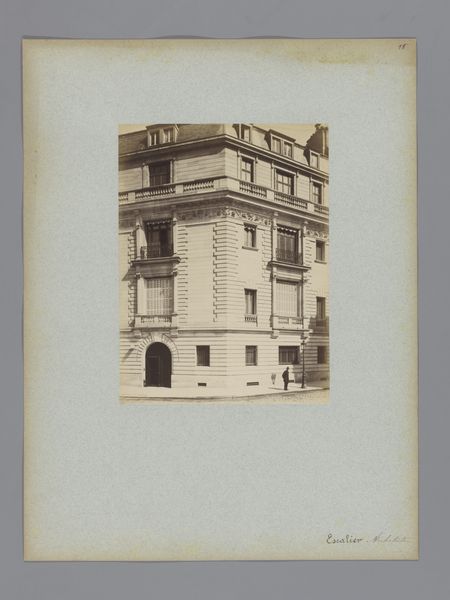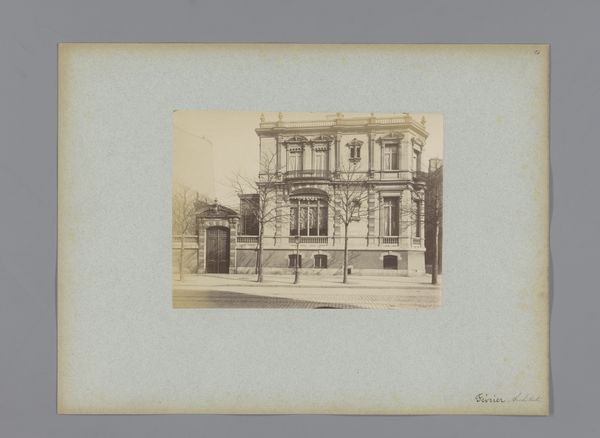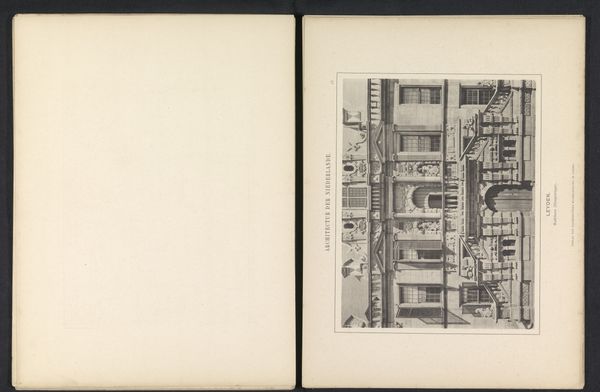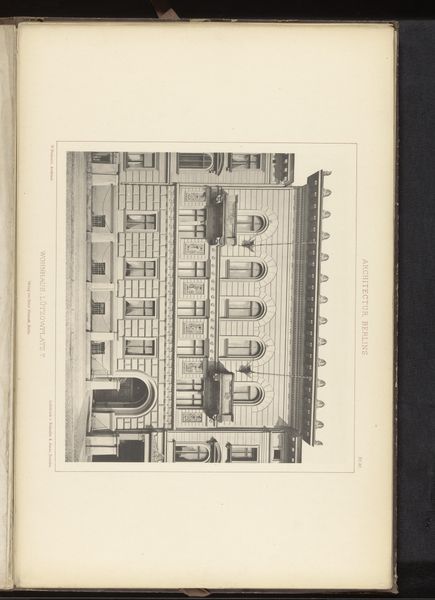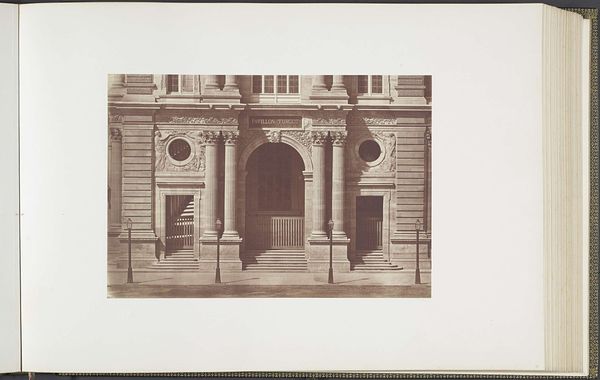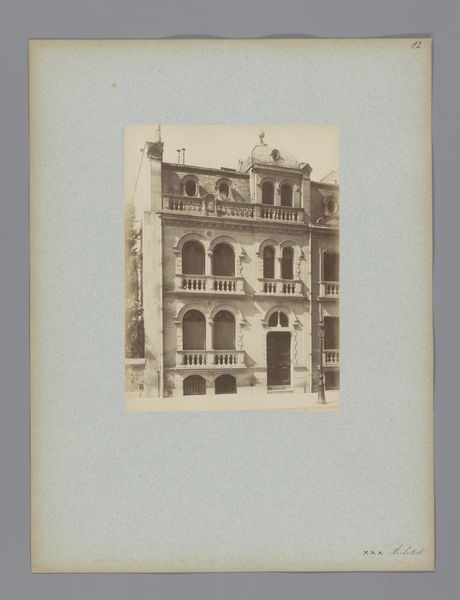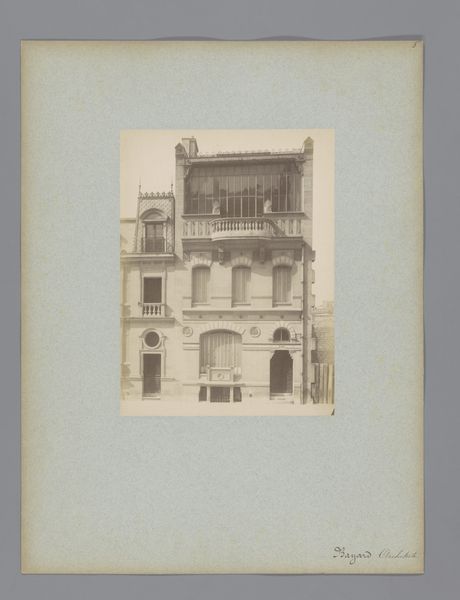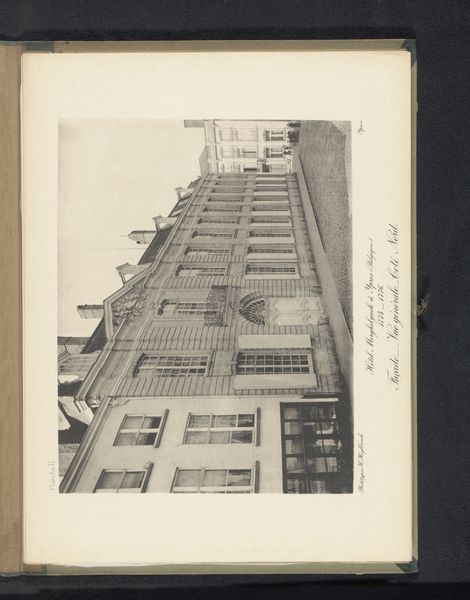
photography, architecture
#
photography
#
cityscape
#
architecture
#
realism
#
building
Dimensions: height 166 mm, width 213 mm
Copyright: Rijks Museum: Open Domain
Lampué et Cie made this print of Felix Duban’s Parisian building, using a photographic process sometime in the nineteenth century. We see a stone building with restrained classical ornamentation. This image helps us to think about the public role of architecture in nineteenth-century Paris. The building’s design is self-consciously respectable and conservative. The clean lines and classical references might signify a commitment to traditional values and social norms. But the building also speaks to the new institutions of its own time. The photograph itself signifies a shift in what was worth preserving and circulating as art. Photography democratized access to images and enabled new forms of documentation. To understand images like this, we might consult period architectural journals, municipal records, and biographical information on the architect. Art is contingent on social and institutional contexts.
Comments
No comments
Be the first to comment and join the conversation on the ultimate creative platform.
